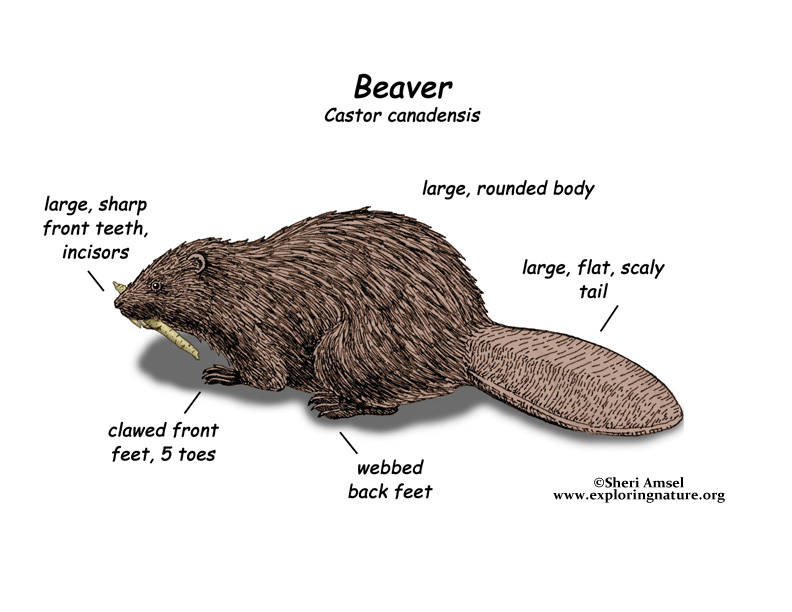

Beaver are found all over Canada and the U.S.
Beaver live on ponds and rivers in forests.
They are the largest rodents in North America. Rodents are a family of mammals that gnaw (chew) with 2 pairs of sharp, front teeth (incisors). These incisors never stop growing so are always sharp. Beavers weigh from 40 - 100 pounds. They have a large, flat, scaly tail that they slap on the water when they are frightened. They have webbed back feet. They can close their throats while they carry sticks in the water so they won’t drown.
Beavers are active at night (nocturnal). They cut down trees to build dams. A dam blocks the flow of the river. The water level rises behind the dam. This makes a beaver pond where the beavers build their lodge. To protect their young, the only entrance is underwater.
They eat water lilies roots, leaves and the green bark of softwood trees.
Predators are lynx, wolverine, bear, coyote and even man.
They have just one mate their whole life (monogamous). They both care for the babies. Females are pregnant for 4 months (gestation). She has up to 4 kits a year.
They live for about 10 years in the wild. At one time (late 1800s) they were almost extinct from over-hunting. Now they are plentiful. They are not a threatened species.
Kingdom: Animalia
Phylum: Chordata
Subphylum: Vertebrata
Class: Mammalia
Order: Rodentia
Suborder: Castorimorpha
Family: Castoridae
Genus: Castor
Species: Castor canadensis
When you research information you must cite the reference. Citing for websites is different from citing from books, magazines and periodicals. The style of citing shown here is from the MLA Style Citations (Modern Language Association).
When citing a WEBSITE the general format is as follows.
Author Last Name, First Name(s). "Title: Subtitle of Part of Web Page, if appropriate." Title: Subtitle: Section of Page if appropriate. Sponsoring/Publishing Agency, If Given. Additional significant descriptive information. Date of Electronic Publication or other Date, such as Last Updated. Day Month Year of access < URL >.
Amsel, Sheri. "Beaver" Exploring Nature Educational Resource ©2005-2024. December 16, 2024
< http://www.exploringnature.org/db/view/Beaver >

